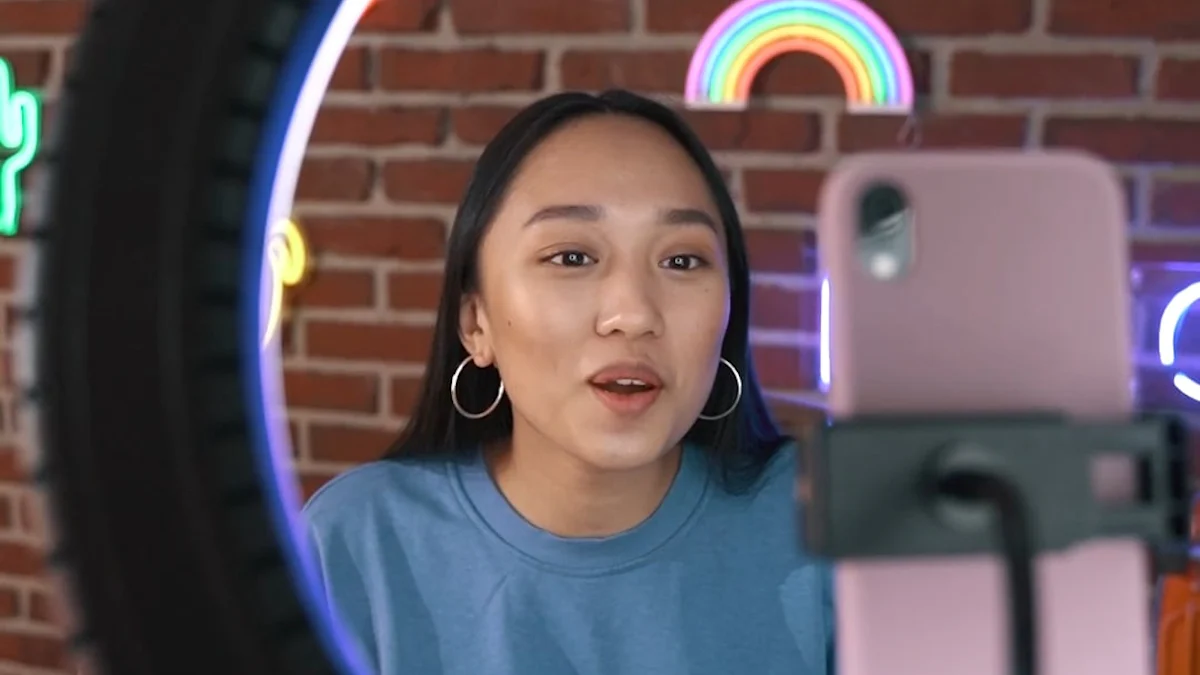Steps to Partner with Influencers for Affiliate Success

Partnering with influencers can transform your affiliate influencer marketing strategy. Why? Because influencers bring trust and authenticity to the table. Their recommendations feel personal, which makes their followers more likely to engage and convert. Did you know that influencer marketing now drives 16% of e-commerce sales? Plus, the market has tripled since 2019, proving its growing impact. Younger audiences, especially, rely on influencers to discover new products. By combining affiliate programs with influencer collaborations, brands have seen sales jump by 46%. If you’re ready to boost your reach and credibility, this approach is a game-changer.
Define Goals for Affiliate Influencer Marketing
Before diving into influencer collaboration, you need to define your goals. Clear objectives will guide your strategy and help you measure success. Let’s break this down step by step.
Set Clear Objectives
Focus on brand awareness, sales, or lead generation.
What do you want to achieve with affiliate influencer marketing? Your goals could range from increasing visibility to driving conversions. Here’s a quick look at common objectives brands aim for:
| Objective | Description |
|---|---|
| Increasing Brand Awareness | Collaborating with influencers to reach a larger audience and enhance visibility. |
| Driving Website Traffic | Attracting more visitors to the brand's website through influencer partnerships. |
| Boosting Sales | Utilizing influencer marketing to increase sales and conversions. |
| Enhancing Customer Engagement | Creating meaningful interactions to foster connections between the brand and its customers. |
By identifying your primary focus, you’ll know where to channel your efforts. For example, if your goal is brand awareness, you might prioritize influencers with a large following. If it’s sales, you’ll want influencers with high engagement rates.
Establish measurable KPIs to track success.
Once you’ve set your goals, it’s time to measure them. Key performance indicators (KPIs) will help you track progress and adjust your strategy. Here are some examples:
| KPI | Key Insight | Impact on Bottom Line |
|---|---|---|
| Total Affiliate Revenue | Overall program health and performance | Informs budget allocation and growth strategies |
| Revenue by Affiliate | Individual affiliate contributions | Optimizes resource allocation and maximizes revenue potential |
| Average Order Value | Sales quality and customer behavior | Enhances profitability through effective promotional strategies |
| Conversion Rate | Effectiveness of converting visitors | Maximizes sales potential and revenue growth |
| Click Traffic | Volume and quality of traffic | Increases opportunities for conversions and sales |
| Gross Orders vs Net Orders | True picture of successful transactions | Ensures accurate revenue tracking and highlights areas for improvement |
Tracking KPIs ensures you stay on course. For instance, if your click traffic is high but conversions are low, you might need to tweak your messaging or offer.
Align Goals with Influencer Campaigns
Choose content types like reviews, tutorials, or unboxings.
The type of content your influencers create should align with your goals. Here are some popular options:
- Product Placements
- Giveaways & Contests
- Tutorials
- How-To Guides
- Product Reviews & Rankings
- Favorites & Best Features
- Unboxing Videos
- Podcast Interviews
- Styling Sessions
A great example of influencer content comes from YouTuber Danksy. Danksy has created around 500 tutorials on how to use Adobe software. The content ranges from beginner-level "How to use Adobe Photoshop" to advanced web design like "Create a 3D text effect in Illustrator." The content isn’t simply a "Buy Now" message. Instead, it shows the capabilities of Adobe software and what users can do with it.
If your goal is to boost sales, product reviews or unboxing videos can work wonders. For brand awareness, tutorials or how-to guides might be more effective.
Ensure campaigns reflect your brand values.
Your influencer partnerships should feel authentic. Choose influencers whose tone and style align with your brand. For example, if you’re a sustainable fashion brand, work with influencers who promote eco-friendly lifestyles. This alignment builds trust and ensures your message resonates with the audience.
By defining your goals and aligning them with the right campaigns, you’ll set the foundation for a successful collaboration.
Identify and Find Influencers for Affiliate Marketing

Finding the right influencers is crucial for your affiliate marketing success. You want to connect with creators who align with your brand and can effectively engage your target audience. Here’s how you can do it.
Use Influencer Marketing Tools
Explore platforms like Upfluence, Aspire, or Heepsy.
Influencer marketing tools simplify the process of finding and managing influencers. Platforms like Upfluence and Aspire offer advanced search features, detailed analytics, and campaign management tools. For example, Aspire integrates with Shopify, making it easy to track affiliate links and promo codes. Upfluence, on the other hand, provides robust search capabilities and even agency services for additional support. These tools save time and help you focus on building effective influencer partnerships.
| Platform | Key Features |
|---|---|
| Aspire | E-commerce integration, content ownership, and scalability for campaigns. |
| Upfluence | Advanced influencer analytics and done-for-you agency services. |
Leverage social media search tools and hashtags.
Social media platforms are treasure troves for finding influencers. Use hashtags related to your niche to discover creators who are already talking about topics relevant to your brand. For instance, if you’re in the fitness industry, search for hashtags like #FitnessJourney or #HealthyLiving. Social media search tools can also help you filter influencers by location, follower count, or engagement rate.
Conduct Manual Research
Search for niche influencers on Instagram, YouTube, or TikTok.
Sometimes, the best influencers aren’t on big databases. You can manually search platforms like Instagram, YouTube, or TikTok to find niche creators. Look for influencers who post content that resonates with your brand values. Tools like BuzzSumo and Followerwonk can also help you identify relevant creators in your industry.
Analyze competitors’ influencer partnerships.
Your competitors can provide valuable insights. Study their influencer collaborations to see what’s working for them. Pay attention to the type of content their influencers create and how their audience responds. This research can help you refine your strategy and avoid wasting resources on ineffective campaigns.
Categorize Influencers by Reach
Differentiate between nano, micro, and macro influencers.
Not all influencers are created equal. Nano influencers (up to 10k followers) have high engagement rates, making them great for building trust. Micro influencers (10k-100k followers) balance reach and engagement, while macro influencers (100k+ followers) are ideal for large-scale awareness campaigns.
| Influencer Type | Average Engagement Rate | Follower Count Range |
|---|---|---|
| Nano Influencers | 4.39% | Up to 10k |
| Micro Influencers | 2% - 3% | 10k - 100k |
| Macro Influencers | Lower than Micro | 100k+ |
Match influencer size to your campaign goals and budget.
Your campaign goals should guide your choice of influencer. For example, if you’re aiming for brand awareness, macro influencers can give you the reach you need. For engagement-driven campaigns, nano or micro influencers are more effective. Always consider your budget and audience when making this decision.
By using these strategies, you’ll be well on your way to finding influencers who can drive your affiliate marketing efforts to success.
Evaluate Influencers for Effective Collaboration
Not all influencers are the right fit for your affiliate marketing campaign. To ensure success, you need to evaluate them carefully. Here’s how you can do it.
Analyze Audience Fit
Ensure the influencer’s audience aligns with your target market.
You want influencers whose followers match your ideal customer profile. Start by defining your target audience. Consider factors like age, gender, location, interests, and behaviors. Then, analyze the influencer’s audience demographics using analytics tools. Don’t just focus on follower count—engagement matters more. Look for influencers who genuinely connect with their audience and align with your brand values. Reviewing their past partnerships can also reveal if they’re a good match for your goals.
Check engagement rates and authenticity.
Engagement rates tell you how well an influencer’s content resonates with their audience. Metrics like engagement by reach, impressions, and daily engagement rates can provide valuable insights. For example, if an influencer has high engagement by reach, it means their followers actively interact with their content. Tools like GRIN or FakeCheck can help you verify authenticity by identifying fake followers or bots. Manual audits, such as comparing follower counts to engagement rates, are also effective.
| Metric | Description |
|---|---|
| Engagement by Reach | Assesses effectiveness by comparing engagement (likes, comments, shares) to unique viewers. |
| Engagement by Impressions | Measures engagement against total content displays (impressions). |
| Cost Per Engagement (CPE) | Calculates cost effectiveness of an influencer marketing campaign. |
| Daily Engagement Rate | Tracks engagement over time, showing fluctuations in daily engagement. |
Assess Content Quality
Look for consistent, high-quality posts.
Consistency is key. Influencers who post regularly and maintain high-quality visuals are more likely to keep their audience engaged. Scroll through their feed to see if their content feels polished and professional. High-quality posts often include clear visuals, compelling captions, and thoughtful storytelling.
Ensure their tone and style match your brand.
An influencer’s tone and style should complement your brand’s personality. For instance, if your brand is playful and fun, avoid influencers with a formal or serious tone. Their content should feel like a natural extension of your messaging. This alignment ensures the collaboration feels authentic to their audience.
Verify Credibility
Identify fake followers or bots.
Fake followers can skew an influencer’s metrics and reduce the effectiveness of your campaign. Tools like Social Audit Pro or Influencer Hero can analyze follower quality and flag suspicious accounts. Manual checks, such as reviewing follower growth patterns, can also help you spot anomalies.
Review past collaborations for professionalism.
An influencer’s previous partnerships can tell you a lot about their work ethic. Look at how they’ve represented other brands. Did they deliver on time? Was their content aligned with the brand’s values? Thorough research ensures you partner with someone reliable and professional.
By evaluating influencers on these criteria, you’ll set the stage for a successful influencer collaboration that drives results for your affiliate marketing efforts.
Build Relationships Before Influencer Collaboration

Building strong relationships with influencers is key to successful affiliate marketing. When you take the time to connect with them authentically, you set the stage for a meaningful and productive collaboration. Here’s how you can start building those connections.
Engage with Their Content
Like, comment, and share their posts to show genuine interest.
Start by interacting with their content. Like their posts, leave thoughtful comments, and share their work with your audience. This shows you’re genuinely interested in what they do. For example, if an influencer shares a fitness tip that resonates with your brand, comment on how it aligns with your values. Sharing their content also helps you stay on their radar without being pushy. Consistent engagement builds familiarity and trust, making future conversations smoother.
Start conversations in DMs to build rapport.
Once
Craft a Personalized Outreach for Affiliate Marketing
Creating a personalized outreach message is essential when connecting with influencers. A tailored approach shows you value their work and increases the chances of a positive response. Here’s how you can craft messages that stand out.
Tailor Your Message
Highlight why you chose them specifically.
When reaching out, make it clear why you’re interested in working with them. Mention specific qualities or achievements that caught your attention. For example, if an influencer consistently shares high-quality tutorials or has a unique storytelling style, let them know. This personal touch shows you’ve done your homework and aren’t sending a generic pitch.
Reference their past work or achievements.
Pointing out their previous work adds credibility to your message. For instance, you could say, “Your recent post about sustainable living was so inspiring, and it aligns perfectly with our brand’s mission.” This not only flatters the influencer but also demonstrates that your collaboration would be a natural fit.
| Scenario | Example Message |
|---|---|
| Exclusive Opportunity | Hi [Name], I hope you’re doing well! I wanted to reach out because we’re planning something special at [Brand], and your creativity immediately came to mind. Your recent post about [specific topic] was so inspiring. This is a paid opportunity to [brief description of campaign goal]. |
| Product Launch | Hi [Name], I hope you’re doing well! We’re about to launch something we’re incredibly excited about at [Brand]: our new [product]. Your [specific quality] is exactly what we need to bring this to life for your audience. |
Emphasize Mutual Benefits
Explain how the partnership benefits both parties.
Make it clear how the collaboration will help them as much as it helps you. Highlight opportunities like increased exposure, access to exclusive products, or paid partnerships. For example, you could say, “This campaign will allow you to showcase a product your audience will love while earning commissions through affiliate marketing.”
Be transparent about expectations and compensation.
Set clear expectations upfront. Let them know what deliverables you’re looking for, such as product reviews or social media posts. Be honest about compensation, whether it’s a flat fee, free products, or affiliate commissions. Transparency builds trust and sets the tone for a smooth collaboration.
Tip: Clearly define your objectives, like product reviews or sponsored content, and align them with the influencer’s audience interests. This ensures mutual benefits and a successful partnership.
Maintain a Professional Yet Friendly Tone
Use a conversational tone while staying professional.
Your message should feel approachable but not overly casual. Avoid jargon and keep your language simple. For example, instead of saying, “We’d like to leverage your platform for brand amplification,” say, “We’d love to work with you to share our product with your audience.”
Include a clear call-to-action for next steps.
End your message with a clear and polite call-to-action. For example, “Let me know if you’re interested, and we can discuss the next steps!” This encourages a response and keeps the conversation moving forward.
By crafting personalized outreach messages, you’ll build stronger connections with influencers and set the stage for a successful affiliate marketing campaign.
Follow Up and Solidify Influencer Collaboration
Be Persistent but Respectful
Send polite follow-ups if there’s no response.
Sometimes, influencers may not respond to your initial outreach. Don’t take it personally—it’s often because they’re busy. Wait about a week or two before sending a follow-up message. Keep it polite and acknowledge their packed schedule. For example, you could say, “I know you’re super busy, but I wanted to check in and see if you had a chance to review my previous message.” If emails or direct messages don’t work, try alternative methods like reaching out through their business email or manager. Engaging with their content by liking or commenting can also help you stay on their radar.
Tip: Avoid following up during busy times like holidays or major industry events. Timing matters!
Respect their decision if they decline.
Not every influencer will be interested in working with you, and that’s okay. If they decline, thank them for their time and leave the door open for future opportunities. A simple, “Thanks for considering us! We’d love to stay in touch for potential collaborations down the line,” can go a long way in maintaining a positive relationship.
Formalize the Partnership
Create a contract outlining terms, deliverables, and payment.
Once an influencer agrees to collaborate, it’s time to get everything in writing. A solid contract protects both parties and ensures clarity. Include details like the scope of work, specific deliverables, deadlines, and payment terms. For example, outline whether they’ll create Instagram posts, YouTube videos, or blog content. Specify who owns the content and whether you’ll need approval before it goes live. Don’t forget to include branding requirements and legal obligations, like FTC compliance for affiliate marketing disclosures.
Pro Tip: A well-drafted contract avoids misunderstandings and keeps the collaboration running smoothly.
Ensure compliance with FTC guidelines for affiliate disclosures.
Transparency is key in affiliate marketing. Make sure the influencer clearly discloses their partnership with your brand. This could be as simple as adding “#ad” or “#sponsored” to their posts. FTC compliance not only builds trust with their audience but also protects both you and the influencer from legal issues.
Maintain Open Communication
Provide regular updates and feedback during the campaign.
Good communication is the backbone of any successful partnership. Share your campaign objectives upfront and keep the influencer in the loop with regular updates. For example, let them know how their content is performing or if any adjustments are needed. Constructive feedback helps them refine their work and ensures the campaign stays on track.
Note: Acknowledge their efforts and contributions. A simple “Great job on that post!” can boost morale and strengthen your relationship.
Build a long-term relationship for future collaborations.
Think beyond the current campaign. Long-term partnerships with influencers can bring huge benefits. They’ll have more time to connect with your brand, making their recommendations feel authentic. Plus, consistent messaging over time builds trust with their audience. Long-term collaborations are also cost-effective—you can often negotiate better rates and get more value from the relationship.
Did You Know? Influencers who work with brands over time tend to deliver better results because they truly understand the brand’s values and audience.
By following these steps, you’ll not only solidify your current collaboration but also lay the groundwork for future success in affiliate marketing.
You’ve got everything you need to kickstart your affiliate influencer marketing journey. Start by defining your goals—whether it’s boosting sales, building brand awareness, or generating leads. Next, find influencers who align with your niche and evaluate their profiles for audience fit and content quality. Build genuine relationships before reaching out, and craft personalized messages that highlight mutual benefits.
Ready to take action? Follow these steps:
- Define your campaign goals.
- Use influencer discovery tools to find the right creators.
- Evaluate their engagement and audience demographics.
- Interact with their content to build rapport.
- Send a compelling outreach message to start the collaboration.
When done strategically, influencer marketing offers long-term benefits like increased brand loyalty, authenticity, and cost-effectiveness. For example, brands like Gymshark have seen massive success by partnering with influencers to showcase products and drive sales. With the right approach, you can achieve similar results and create lasting partnerships that grow your brand.
Tip: Let data guide your decisions and focus on building relationships for sustainable success.
FAQ
How do I choose the right influencer for my brand?
Start by identifying your target audience. Then, look for influencers whose followers match that audience. Use tools like Upfluence or Aspire to analyze their engagement rates, content quality, and authenticity. Always ensure their values align with your brand.
What’s the best way to approach an influencer?
Be personal and genuine. Mention why you admire their work and how your collaboration benefits them. Keep your message short and clear. Don’t forget to include a call-to-action, like asking if they’re interested in discussing further.
How much should I pay influencers for affiliate marketing?
Compensation depends on their follower count, engagement rate, and the scope of work. Nano influencers may accept free products, while macro influencers often charge higher fees. Always discuss payment terms upfront to avoid confusion.
How can I track the success of an influencer campaign?
Use KPIs like click traffic, conversion rates, and affiliate revenue. Tools like Google Analytics or affiliate platforms can help you monitor performance. Adjust your strategy based on the data to maximize results.
What if an influencer doesn’t respond to my outreach?
Don’t worry—it happens! Wait a week, then send a polite follow-up. If they still don’t reply, move on to other influencers. Respect their time and keep the door open for future opportunities.
Tip: Building relationships takes time. Stay consistent and patient for long-term success.
See Also
7 Essential Steps for Crafting Your Influencer Strategy
7 Key Steps to Establish Your Influencer Marketplace
A Beginner's Guide to TikTok Influencer Marketing
Guidelines for Achieving Success as a Brand Ambassador
Complete Guide to Obtaining Influencer Whitelisting Approval
